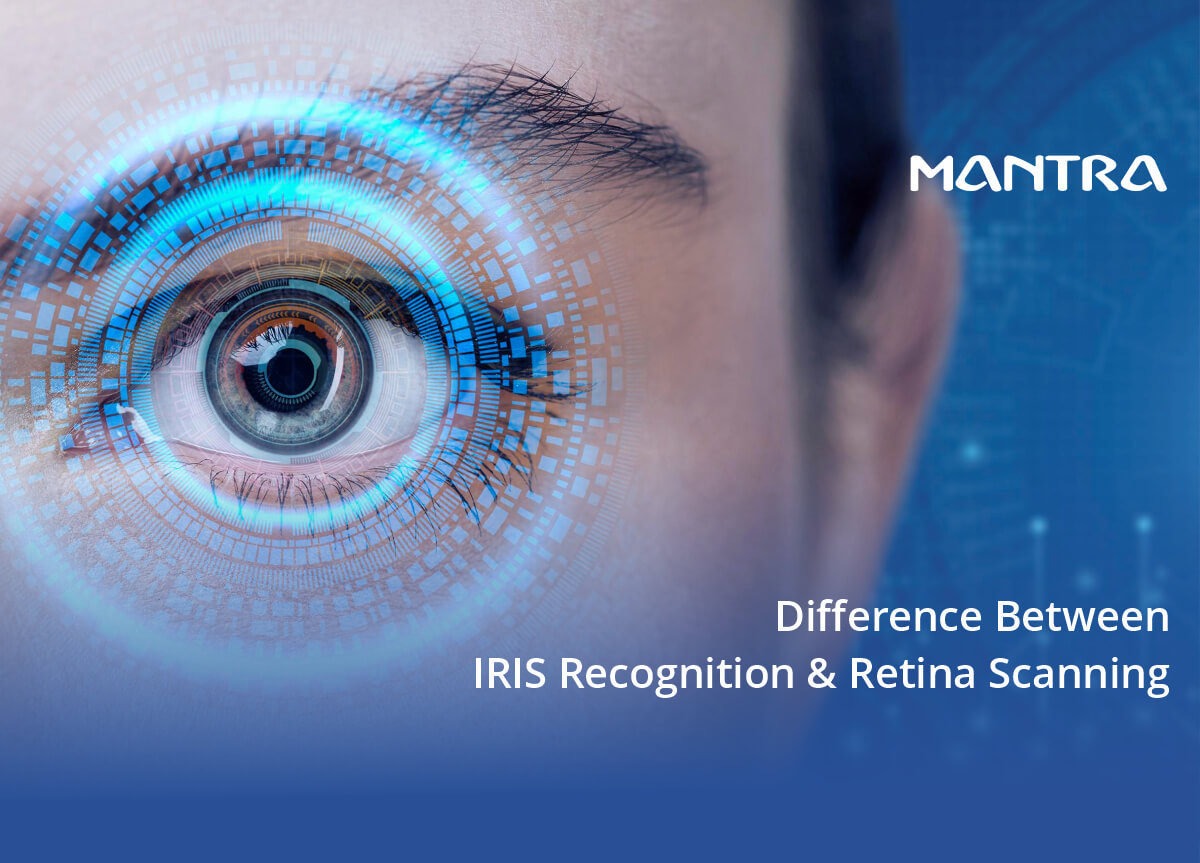
People often confuse iris recognition and retina scanning because both are considered the most reliable biometric reading and involve eye-based biometric identification. Furthermore, both modalities are utilized for high-precision applications. However, there is a significant variation in how both modalities function. That will have an impact on the price, applicability, and performance of biometric scanning. This article will go through the distinctions between iris and retina scanning techniques.
Retina scanning
The retina is the structure of blood vessels that carry blood to the eyes. It is a complex and unique structure to each individual, found at the back of the eye. A retina scanner will map this unique pattern of the retina with a flashing UV light. As the UV light passes through the blood vessels, it absorbs UV light more than the rest of the retina. The difference in absorption creates a pattern variation, and this pattern is converted into an image code. The code is recorded in the database throughout the registration process and compared to the authentication samples during the verification phase.
With 0,0001 percent of FAR, retina scanning is one of the most accurate biometrics. Retinal patterns are constant throughout life; illnesses like diabetes, glaucoma, or retinal degenerative disorders can modify them. The retinal scan is also used for illness determination in the medical field.
Iris recognition
Iris recognition reads the circular front section of the eye. A UV camera is used to capture the iris pattern. The iris pattern is unique for each person; that is captured using a UV camera. The stored image may contain the iris circle's size and colour. With this method, fake match rates are infinitely low. This technique is considered to be 90-99 percent accurate.
In contrast to retinal scanning, iris recognition employs camera technology with modest infrared light to capture photos of the complex iris pattern. Hence it involves less complex devices, making it suitable for access control and other niche authentication purposes.
Iris recognition VS retina scanning
The main difference between retinal and iris recognition is that; retinal scanning is intrusive, and iris recognition is a non-intrusive method of biometric identification. The retina-intrusive method involves using a beam of light flashing into the eye to capture the retina's pattern. It necessitates the use of specialized equipment and is best suited for in-person identification processes.
On the other hand, iris recognition is a non-intrusive method of biometric identification that only captures the picture of the pupil. Iris is the most common ocular-based biometric method used today. Iris scanning is a non-intrusive method of biometric identification, and an iris can take from a distance. Since it is a non-intrusive method, it is commonly utilized in registration and KYC applications instead of retinal scanning.
Other noble differences:
Diseases can affect the retina, but the iris is more resilient.
Iris image can take from a distance, whereas retina scanning does it by bringing the person's eye near an eyepiece.
Retina scanning is ideal for physical identification, whereas Iris scanning can take place in physical and digital scenarios.
Iris scan has faster scanning than retina scan.
Iris scanning is more widely accepted for commercial use since it is non-intrusive and fast.
Conclusion
Iris scanners are most commonly used for commercial applications, access control, biologin, security devices, etc. A retinal scan is often used by ophthalmologists and optometrists for eye exams. They are hardly used for security applications; they are utilized by governments such as the FBI, the CIA, etc. We believe we have provided sufficient information to differentiate between iris and retina scans. If you are seeking iris scanners or biometric solutions, visit Mantra.com.
Aris Vision CDMX
Here's a breakdown of the differences between Iris Recognition and Retina Scanning for those who aren't sure. Ophthalmologists and optometrists perform retinal scanning if there is an eye problem. Thank you for the useful information. -Aris Vision CDMX
Reply